Original Research: Parasitological and Fungal Assessment of Fresh Cow Milk Obtained from Five Herds in Karshi, F.C.T. Nigeria
Milk from animal sources intended for human consumption is usually subjected to a strict sterilization process to ensure that they are safe. Should this process fail as a result of an oversight or error, the chances of infection in humans become highly unquestionably. The major trigger for this research was the recurrent case of infection with fungi and parasites among people within the location of this research work. It was observed that most of them consume unprocessed milk.
Today, I intend to share the findings from the research we did sometime last year on fresh cow milk products gotten from some herds in the north-central area of Nigeria. This article will take two forms. The first part (this particular post) will introduce and give accounts of the findings from the research work while the second part will explain clear the air on some perceptions and beliefs some individuals have about fresh cow milk.
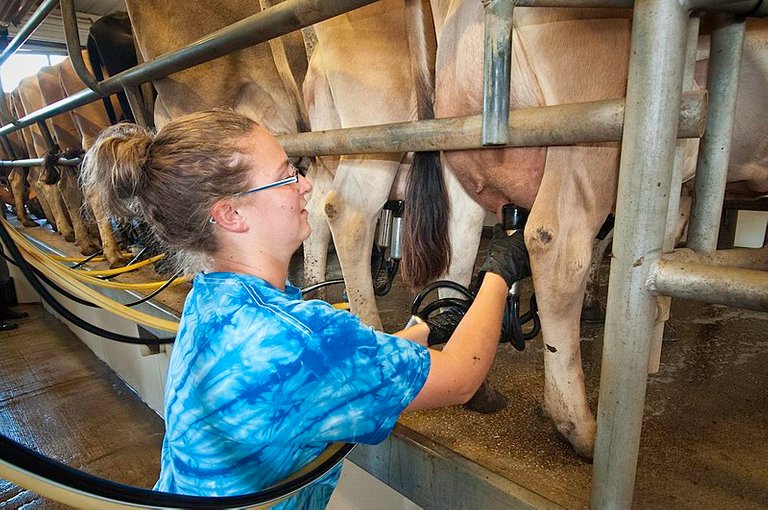
Cow milk production
As a tradition, we will begin with the entire work's abstract of the work, so that you can have a general overview of the findings and how the research work was carried out.
Abstract
Milk is a highly nutritious food that can be obtained from a variety of animal sources and is used for human consumption. Raw milk is generally considered an ideal growth medium for microorganisms since it provides perfect conditions and nutrients for their growth. This study was aimed at assessing fungi and parasites present in fresh cow milk. 50 samples of fresh cow milk were collected randomly from five herds and subjected to parasitological and fungal assessment. 2 ml of each milk sample was centrifugated, decanted, and stained with Lugol’s iodine to view for parasites. 2ml of each sample was spread over the surface of Potato Dextrose Agar to encourage the growth of fungi. Aspergillus spp., Mucor spp., and Rhizopus spp. were the fungi found. The number of fungal colonies was 126, 23, 7, and 19 for yeasts, Rhizopus spp., Aspergillus spp., and Mucor spp. and respectively. Cryptosporidium spp. and Toxoplasma spp. were the parasites found. The high amount of microorganisms emphasizes the need for pasteurization and sterilization. Keywords: Milk, animal sources, human consumption, Rhizopus spp.
Now that we have a glimpse of the research work, let's go into detail and explain more. We will begin with a detailed introduction to the basics of fresh cow milk; its production and the sterilization process.
Introduction
Milk is an opaque liquid produced by the mammary glands of female animals including humans. It is a highly nutritious food that can be obtained from a variety of animal sources such as cows, goats, sheep, and buffalo, as well as humans, and it is used for human consumption. It provides the primary source of nutrition for newborn mammals before they can digest other types of food. They are obtained from the sources in the raw form.
Raw milk on the other hand can be defined as milk from cows, sheep, goats, or any other animal that has not been pasteurized to kill harmful bacteria. Raw milk is generally considered an ideal growth medium for microorganisms because such milk provides all the necessary nutrients and conditions for their growth. The exact component of milk varies in species, but it contains a significant amount of saturated fat, protein, calcium as well as vitamin C.
Milk is produced in such a specific manner that it is impossible to avoid contamination of milk with microorganisms. The microbial content of milk is as a result a major feature in determining its quality. Contamination of raw milk can originate from different sources and the occurrence of microorganisms in raw milk can take place during milking, handling, storage, and other pre-processing activities.
Although milk consumption provides high nutritional value, there have been several controversies about the consumption of dairy and milk products during adulthood. Some studies however have confirmed the nutritional importance of milk in the human diet. Compared to bacterial diversity, only a scanty number of researches have been made on fungal and parasitic contaminants in raw milk, and yet these two groups of microorganisms are important in causing diseases in humans
Milk has a high nutrient content, a near-neutral pH, and a high water activity, thus predisposing it to be an ideal environment for the growth of many microorganisms. Raw milk especially is generally considered an ideal growth medium for microorganisms. Activities such as milking, handling, storage, and other pre-processing activities can introduce microscopic fungi into raw milk.
Lapses in hygienic practices and necessary activities such as milking, handling, storage, and other pre-processing activities can introduce microorganisms which could result in milk-borne diseases. These diseases are usually severe and sometimes eventually lead to death.
Due to the numerous ways in which milk could get contaminated, there are a number of microorganisms which can be found in milk and which could cause diseases. Any person is susceptible to diseases associated with fresh cow milk if the milk they consume contains microorganisms.
There is however a higher risk for pregnant women, children, older adults, and individuals with weakened immune systems. General symptoms of infection caused by milk-borne diseases are usually similar to those of other food borne illnesses and include vomiting, diarrhea, dehydration, headaches, abdominal pain, nausea, and fever. By many accounts, the parasites and fungi commonly associated with fresh cow milk are harmful to human health.
Among the microorganisms associated with fresh cow milk are harmful bacteria such as Campylobacter spp., Salmonella spp., Escherichia coli (E.coli), Coxiella burnetti, Cryptosporidium spp., Yersinia enterocolitica, Staphylococcus aureus, and Listeria monocytogenes. Common milk-borne diseases caused by bacteria include Guillain-Barre syndrome, hemolytic uremic syndrome, miscarriage, reactive arthritis, chronic inflammatory conditions, and, in a few cases, death.
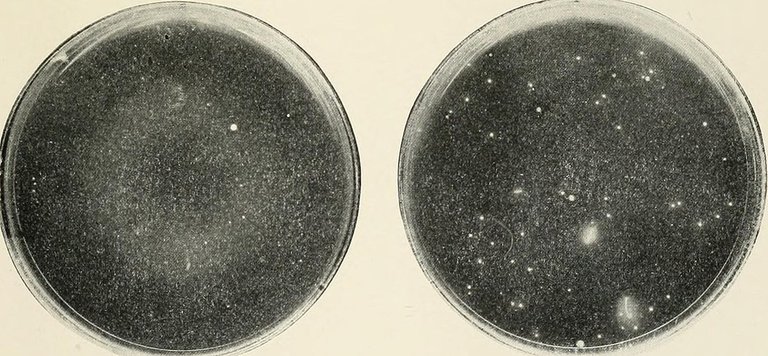
Microorganism growth on agar diluted with raw milk
Invasive fungal infections (IFIs) are generally known to lead to devastating illnesses some of which result in considerable mortality. Fungi produce spores which can cause asthma and allergies. Toxic metabolites called Mycotoxins (specifically aflatoxins in this case) are produced by Aspergillus spp.
Aflatoxins are reported to be carcinogenic towards many animal species and to be suspected carcinogens in humans. In addition, aflatoxins produced by some species are very important because are very problematic in that they target specific organs such as the liver. Some species of Aspergillus spp. can also cause harmful effects, such as invasive aspergillosis, which is one of the most common causes of superficial infections.
A. flavus reportedly causes harm to the upper respiratory tract faster than any other Aspergillus species, causes Allergic Fungal Sinusitis (AFS), and also acts as an etiological agent in keratitis, cutaneous aspergillosis endocarditis (fungi infection associated with the endocardium of the heart), wound infections, craniocerebral aspergillosis (fungi infection associated with the brain), osteomyelitis (inflammation of the bone), and nosocomial infection (infections you acquire in a hospital environment).
The most common method by which raw milk can be made safe for consumption is pasteurization. Pasteurization can be described as raising the temperature of milk just enough to kill potential microorganisms including bacteria, yeasts, and molds. Apart from pasteurization, a method known as sterilization can also be used.
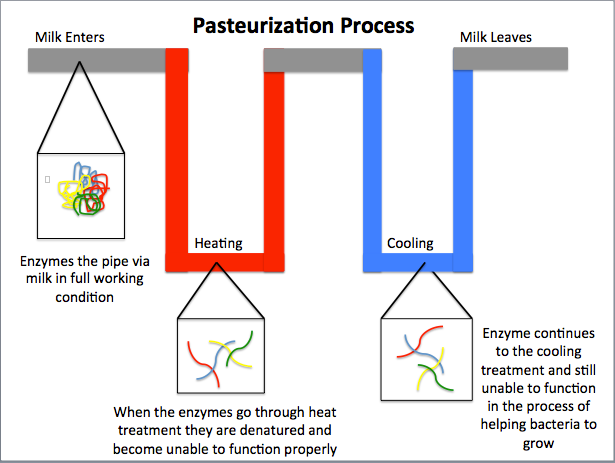
Pasteurization process
Sterilization is the process of heating the milk to between 120˚C and 135˚C so as to ensure the death of all microbial life. When using this method, the packaging is also sterilized before it is filled. It is also usually laminated with aluminum foil to keep out light which could degrade the milk. Sterilized milk can last up to 6 months, unopened, at ambient temperatures.
Other methods have been attempted but with limited success. These include microfiltration, centrifugation, and ultra-violet (UV) radiation. There is however a need for the milk to be refrigerated until its consumption, no matter the method used. Doing will limit the activity of any potential microorganism contamination of the milk and at the same time prolong its stay.
The Research Method employed
Sample Collection
The milk samples were collected in sterile containers. Samples were collected aseptically from the various herds and arranged in a bigger container containing some ice in such a way as to prevent excessive movements of the containers. Afterward, the samples were transported to the laboratory for culturing and for additional studies.
Test Procedure for Identification of Fungi
2 ml of each sample of fresh cow milk was transferred into a sterile plate of Potato Dextrose Agar. Inoculation was by spread plate technique. The plates were incubated for 48 hours at 370C. The primary classification of the colonies was carried out, based on the colony characteristics (pigmentation and shape) and then a microscopic examination of wet mounts of the fungal isolates was carried out.
A portion of the isolated fungi was collected using a sterile needle and placed on the microscope slide having two drops of lactophenol cotton blue on it, followed by teasing using the needle so that the lactophenol cotton blue could penetrate into the cells of the fungi. Later the slide was covered with coverslips and viewed under x40 magnification of the microscope since it is a wet mount.
Identification of parasites was done by direct microscopy. This is achieved by a wet mount of the samples with iodine staining using Lugol’s iodine. The organisms were then classified based on given specifications.
Results and findings
A total of 50 samples were cultured and viewed for parasites and fungi. Of these, 25 samples contained parasites while 25 did not contain any parasites. On the other hand, 34 samples contained fungi while the others did not contain any.
Table 1: Number of samples per herd having parasites and those not having parasites in each herd
Shows a general overview of the number of samples per herd which contained parasites as well as those samples not having any parasites. Each herd had almost the same number of samples having parasites with the highest being 7 samples and the lowest being 4 samples.

Table 2: Frequency and prevalence of Cryptosporidium spp. and Toxoplasma gondii in each herd.
Outlines the frequency and prevalence of each of the parasites as found in the milk from all the herds. 15 samples contained Cryptosporidium spp., while 13 samples contained Toxoplasma gondii

χ 2 = 4.6667
P-value is 0.32324
The result is not significant at p <0.05
Table 3: Number of samples per herd having fungi and those not having fungi in each herd.
Shows a general overview of the number of samples per herd which contained fungi as well as those samples not having any fungi. 34 samples had fungi while 16 did not.

Table 4: Frequency and prevalence of Yeast, Rhizopus spp., Aspergillus spp. and Mucor spp. found in all the 50 samples.
Brings out the number of samples having each type of fungi identified, with highest being yeast which were found in 22 samples. This was followed by Mucor spp. and Rhizopus spp. each found in 10 samples. The fungi least found in samples was Rhizopus spp.

Table 5: Number of fungal colonies per herd.
Gives the number of fungal colonies counted after samples from each herd were counted. Yeast had the highest number of colonies at 126. Following this was Rhizopus spp. which was closely followed by Mucor spp. Aspergillus spp. had the lowest number of colonies at 6 colonies.

P-value = .056348
The result is not significant at p <.05
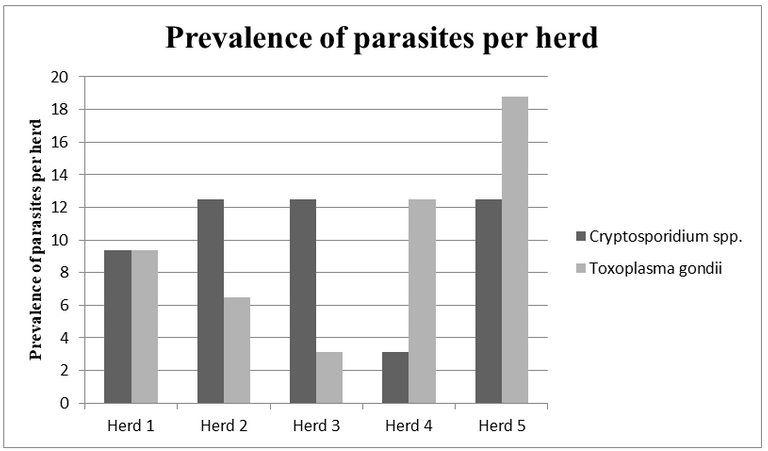
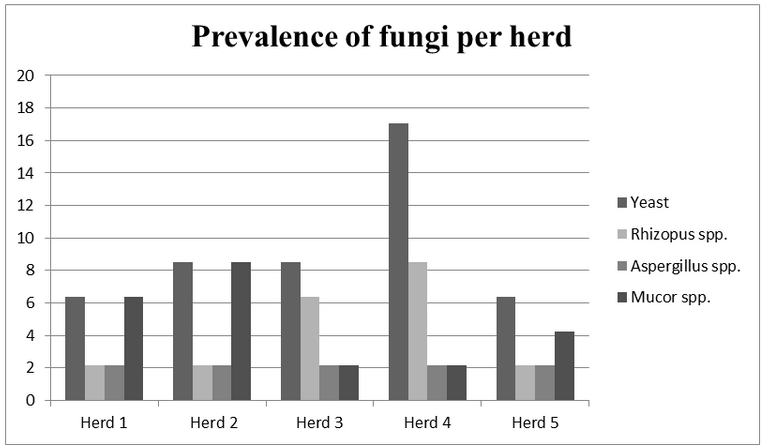
The above figures depicts the percentage of both fungi and parasites per herd. It shows that the number of samples containing fungi were relatively higher than those containing parasites within each herd, except for herd 5 where the number was the same.
Discussion
Milk-borne pathogens can cause a lot of diseases, some of which are subclinical while others are chronic. Depending on the immune status of the individual, these diseases could even lead to death.
The result of this study showed that a great percentage of raw milk contains fungi and parasites which could cause disease. Similarly to research carried out by (Gulbe G et al., 2014) fungi including yeasts, Aspergillus spp., Mucor spp., and Rhizopus spp., were identified. However, some fungi identified in that research were not identified in present research. This could be due to different sanitary conditions in both places.
In addition, present research also identified Cryptosporidium spp., as well as Toxoplasma spp. which were identified in a research by (Gordon, 1999). Given that these protozoa are commonly found in feces, it can be assumed that poor sanitary practices have made contamination by fecal matter to be possible.
The statistical analysis showed that for the parasites, the relation between the variables was not significant, X2 (0.5, N = 50) = 4.6667, p = 0.32324. For the fungi, the relation between the variables was not significant, X2 (0.5, N = 50) = 20.6127, p =.056348.
This implies that the amount of fungi found after culturing could pose a threat to human health if consumed. It also implies that for the parasites, there is only a minor threat to human health if consumed. Based on these deductions, it would be safer to pasteurize or sterilize milk before attempting to consume it, in order to reduce the threat to human health.
In a nutshell...
This work was done using milk samples collected from five herds to assess the presence of parasites and fungi in fresh cow milk. Fungi including yeasts, Aspergillus spp., Mucor spp., and Rhizopus spp. were identified. Also, parasites including Cryptosporidium spp. and Toxoplasma spp. were identified. This indicates poor sanitary conditions and emphasizes the need to sterilize milk by methods such as pasteurization.
Although not all the microorganisms observed in previous works were identified:
- The people who still enjoy consuming unpasteurized cow milk should be sensitized on the harms of such practices.
- There should be an increased awareness of the simple and cost- effective ways by which milk can be rendered healthy for consumption.
Milk in general (be it processed or raw) is a good nutrient source for most microbes. Sterilization and pasteurization remains the two most important processes raw milk must undergo before they are said to be healthy for consumption by humans. Consuming raw milk poses a great risk of infection and must never be consumed unprocessed.
For the detailed research work, you access the journal HERE. Click the more option to unveil download button.
References
1. Quigley, L., O'Sullivan, O., Beresford, T. P., Ross, R. P., Fitzgerald, G. F., & Cotter P. D. (2013). The complex micro biota of raw milk. FEMS Microbiology Reviews, 37(5), 664–698.
2. Moshood, A. Y., & Tengku, A. H. (2013). Assessment of the bacteriological quality of ice cream offered for public consumption in Bauchi, Nigeria. International Organization of Scientific Research Journal of Pharmacy, 3(1), 25-30.
3. Makovec, J. A., & Ruegg, P. L. (2003). Results of milk samples submitted for microbiological examination in Wisconsin from 1994 to 2001. Journal of Dairy Science, 86(11), 3466-3472.
4. Hutchison, M. L., Thomas, D. J., Moore, A., Jackson, D. R., & Ohnstad, I. (2005). An evaluation of raw milk microorganisms as markers of on-farm hygiene practices related to milking. J Food Prot, 68(4), 764-772.
5. Torkar, K. G., & Teger, S. G. (2008). The microbiological quality of raw milk after introducing the two day’s milk collecting system. Acta agriculturae Slovenica, 92(1), 61–74.
6. Claeys, W. L., Verraes, C., Cardoen, S., De Block, J., Huyghebaert, A., Raes, K., Dewettinck, K., & Herman, L. (2014). Consumption of raw or heated milk from different species: An evaluation of the nutritional and potential health benefits. Journal of Food Control, 42, 188-201.
7. Pereira, C. P. (2014). Milk nutritional composition and its role in human health. Journal of Nutrition, 30(6), 619-627.
8. Gulbe, G., & Valdovska, A. (2014). Diversity of microscopic fungi in the raw milk from Latvian organic farms. Institute of Food and Environmental Hygiene, LLU. 31(326).
9. CDC. (2017). Raw Milk Questions and Answers. Center for Disease Control and Prevention.
10. Hussain, I., Mahmood, S. H., Akhtar, M., & Khan, A. (2007) Prevalence of Campylobacter species in meat, milk and other food commodities in Pakistan. Food Microbiology, 24, 219-222.
11. Lucey, A. J. (2015). Raw Milk Consumption Risks and Benefits. Nutrition Today, 50(4), 189-193.
12. Braun-Fahrländer, C., & Von Mutius, E. (2011). Can farm milk consumption prevent allergic diseases? Clinical Expert Allergy, 41(1), 29-35.
13. Jayarao, B. M., Donaldson, S. C., Straley, B. A., Sawant, A. A., Hegde, N. V., & Brown, J. L. (2006). a survey of foodborne pathogens in bulk tank milk and raw milk consumption among farm families in Pennsylvania. Journal of Dairy Science, 89(7), 2451-2458.
14. Marks, N. E., Grandison, A. S., & Lewis, M. J. (2001). Challenge testing of the lactoperoxidase system in pasteurized milk. Journal of applied Microbiology, 91(4), 735-741.
and more...
!1UP
You have received a 1UP from @luizeba!
@stem-curator, @neoxag-curator
And they will bring !PIZZA 🍕.
Learn more about our delegation service to earn daily rewards. Join the Cartel on Discord.
Thanks for your contribution to the STEMsocial community. Feel free to join us on discord to get to know the rest of us!
Please consider delegating to the @stemsocial account (85% of the curation rewards are returned).
Thanks for including @stemsocial as a beneficiary, which gives you stronger support.
I have no specific question on this interesting study that you share with us today. Instead, I am wondering why sterilised milk is not the norm everywhere. Is it purely an economical reason? In this case, I am a bit puzzled because healthcare costs associated with all diseases that could emerge from raw milk consumption are in principle larger than the costs related to sterilisation.
Cheers!
You are very correct Sir. So many individuals even consume raw meat and some of all this are channels through which these parasites infect humans.
Illiteracy and ignorance is also a key factor.
Public enlightenment has been on but sometimes, most of these individuals still have no choice but to stick with their way of life considering the economic hardship in the country. The common man can no longer afford a tin of milk due to its outrageous high price.
And this is spreading all over the world. That's quite unfortunate... Humanity is accelerating to go straight into a wall...